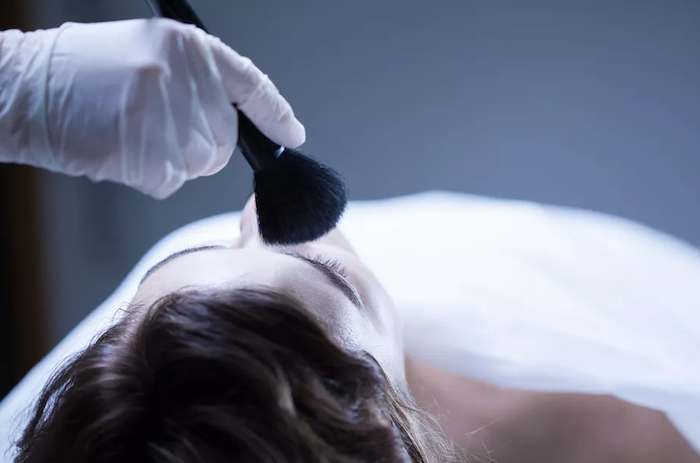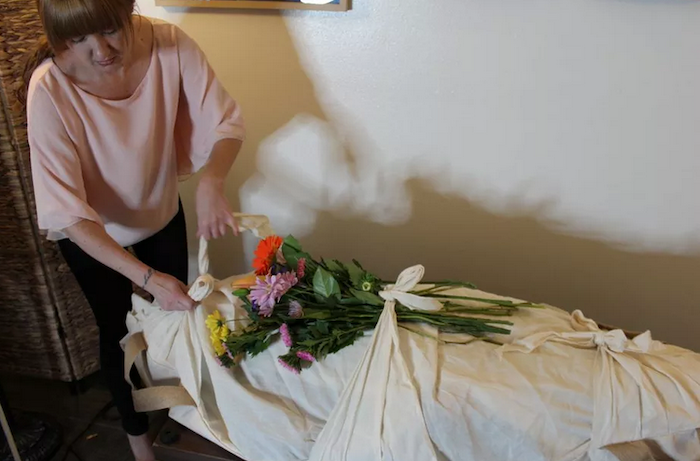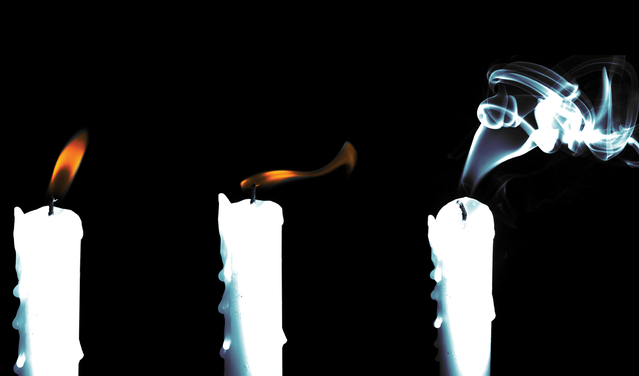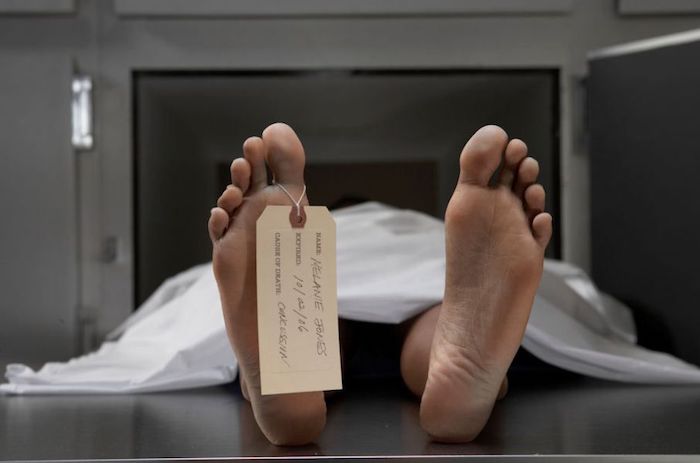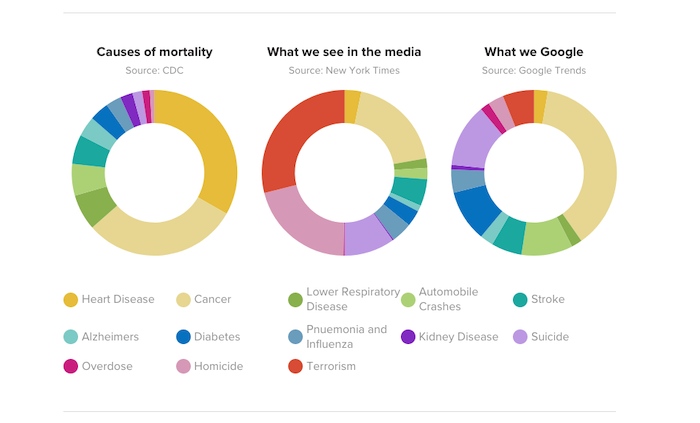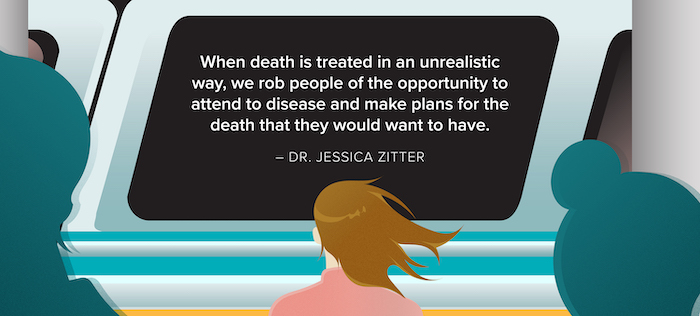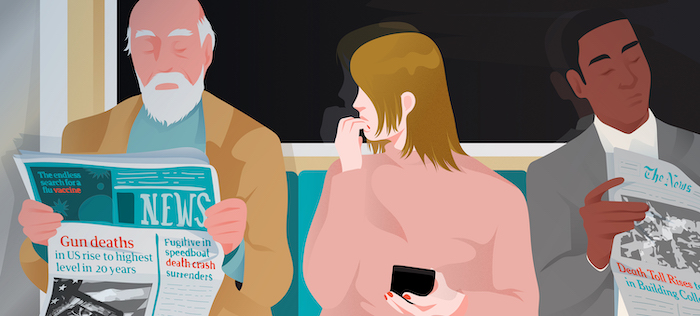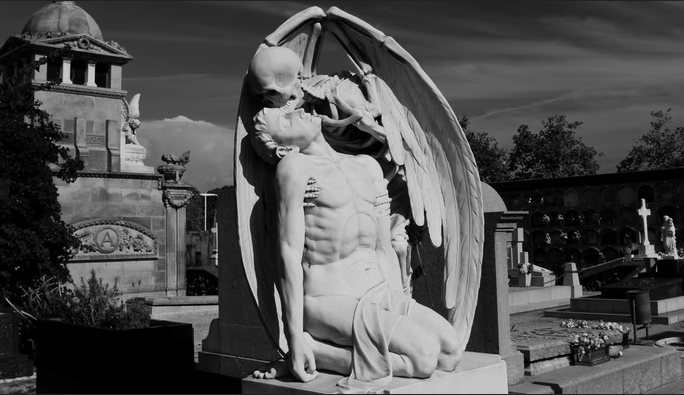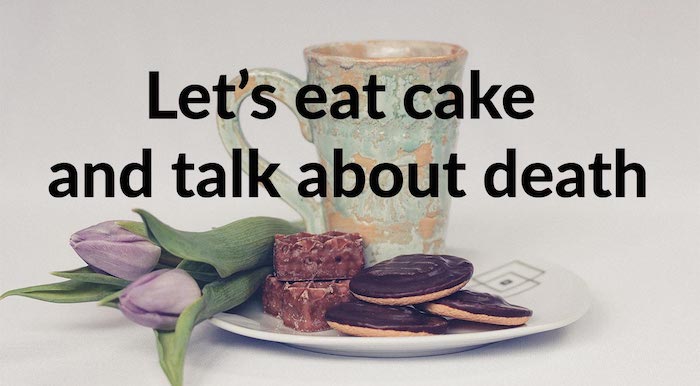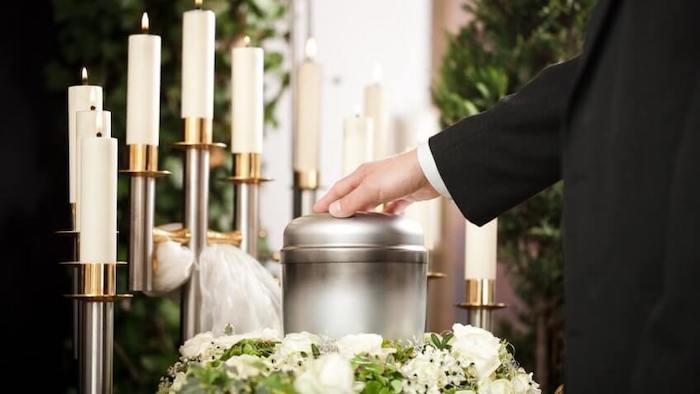
By Gabrielle Olya
There are many reasons to celebrate getting older, but having to think about the cost of death isn’t one of them.
For starters, funeral costs can add up fast. The National Funeral Directors Association cited the median out-of-pocket funeral expenses for 2016 — including viewing and cremation costs — at $7,360. On top of that, the average out-of-pocket expenditure for end-of-life necessities is $11,618, according to the National Bureau of Economic Research.
One of the biggest factors impacting funeral expenses — and the cost of dying, in general — is the state where the death certificate is issued. Just like the cost of living, the cost of dying depends on where you reside.
GOBankingRates calculated the average costs for end-of-life medical care and funeral expenses in each state by multiplying the national averages for those services by every state’s cost-of-living index. The study also considered 2018 inheritance tax and estate tax data, sourced from the Tax Foundation.
50. Mississippi — $18,509
Average funeral expenses: $6,684
Average end-of-life medical costs: $11,825
The cheapest state to die in, Mississippi, has no estate tax or inheritance tax. Average funeral expenses total $6,684, and average medical costs associated with dying come out to $11,825 — both well below the national average. This is unsurprising because Mississippi also has the cheapest cost of living in America, according to a separate GOBankingRates study.
49. Arkansas — $18,681
Average funeral expenses: $6,746
Average end-of-life medical costs: $11,934
The cost of dying in Arkansas is similar to that in Alabama. Funeral expenses in Arkansas average $6,746, while medical costs associated with dying hover around $11,934. The state has no estate tax or inheritance tax.
48. Oklahoma — $18,702
Average funeral expenses: $6,754
Average end-of-life medical costs: $11,948
Medical costs associated with dying in Oklahoma are typically around $11,948, and the average cost of a funeral is $6,754 — notably below national figures. You won’t have to pay inheritance or estate taxes when you die in Oklahoma.
47. Missouri — $18,724
Average funeral expenses: $6,762
Average end-of-life medical costs: $11,962
In Missouri, the cost of a funeral averages $6,762, and the medical costs related to dying average $11,962. Neither estate taxes nor inheritance taxes are imposed.
46. New Mexico — $18,810
Average funeral expenses: $6,793
Average end-of-life medical costs: $12,017
The cost of a funeral in New Mexico averages $6,793, while medical expenses related to dying typically total $12,017. New Mexico doesn’t levy an estate tax or an inheritance tax.
45. Tennessee — $19,068
Average funeral expenses: $6,886
Average end-of-life medical costs: $12,182
Funeral costs average $6,886 in Tennessee, and medical costs related to dying are normally around $12,182. One of the most tax-friendly states for retirees, Tennessee doesn’t have an estate tax or an inheritance tax.
44. Michigan — $19,111
Average funeral expenses: $6,902
Average end-of-life medical costs: $12,209
As the seventh-cheapest state to die in, Michigan doesn’t impose an estate or inheritance tax. The average cost of a funeral in the state is low at $6,902, and medical costs associated with dying are typically around $12,209.
43. Kansas — $19,132
Average funeral expenses: $6,909
Average end-of-life medical costs: $12,223
The cost of a funeral in Kansas averages $6,909, and medical expenses related to death total approximately $12,223. No inheritance tax or estate tax is collected in the state.
42. Georgia — $19,175
Average funeral expenses: $6,925
Average end-of-life medical costs: $12,250
Falling below the national average, the standard cost for funeral expenses in Georgia is $6,925, while medical costs associated with dying are usually around $12,250. Georgia has no estate tax or inheritance tax.
41. Alabama — $19,197
Average funeral expenses: $6,933
Average end-of-life medical costs: $12,264
The average cost of a funeral in Alabama is $6,933, and medical costs associated with dying typically total $12,264. Like the other members of the 10 cheapest states to die in, Alabama doesn’t have an estate tax or an inheritance tax.
40. Wyoming — $19,197
Average funeral expenses: $6,933
Average end-of-life medical costs: $12,264
The average cost of a funeral in Wyoming is $6,933, and medical expenses associated with dying total $12,264, on average. Neither an estate tax nor an inheritance tax is collected in Wyoming.
39. Indiana — $19,347
Average funeral expenses: $6,987
Average end-of-life medical costs: $12,360
Medical costs related to dying in Indiana average $12,360, and the standard for funeral expenses is $6,987. There’s no inheritance tax or estate tax in Indiana.
38. Iowa — $19,369
Average funeral expenses: $6,995
Average end-of-life medical costs: $12,374
Iowa has no estate tax, but unlike many other states, it does have an inheritance tax of up to 15%. The average cost of a funeral is $6,995, and medical expenses related to dying hover around $12,374.
37. Nebraska — $19,519
Average funeral expenses: $7,049
Average end-of-life medical costs: $12,470
If you’re inheriting from a deceased family member in Nebraska, you’ll be taxed at a rate between 1% and 18%. However, the state doesn’t impose an estate tax. The cost of a funeral in Nebraska averages $7,049, and medical expenses associated with dying are typically around $12,470.
36. Ohio — $19,519
Average funeral expenses: $7,049
Average end-of-life medical costs: $12,470
Coming in below the national average, funeral costs in Ohio run approximately $7,049, and medical costs associated with dying total $12,470, on average. Ohio doesn’t have an estate tax or an inheritance tax.
35. Kentucky — $19,541
Average funeral expenses: $7,057
Average end-of-life medical costs: $12,484
Funeral costs in Kentucky total approximately $7,057, while medical expenses related to dying average $12,484. The state doesn’t have an estate tax, but its inheritance tax can be as much as 16%.
34. West Virginia — $19,584
Average funeral expenses: $7,072
Average end-of-life medical costs: $12,511
Dying in West Virginia will cost close to the national average, at around $12,511 in medical costs and $7,072 in funeral expenses. There’s no estate tax or inheritance tax in West Virginia.
33. Texas — $19,669
Average funeral expenses: $7,103
Average end-of-life medical costs: $12,566
The average cost of a funeral in Texas is $7,103, while medical costs associated with death are typically around $12,566. Texans don’t pay an estate tax or an inheritance tax.
32. Idaho — $19,841
Average funeral expenses: $7,165
Average end-of-life medical costs: $12,676
You won’t be charged an estate tax or an inheritance tax in Idaho, which is good news if you are the executor of a will. Plan for around $7,165 in funeral costs and approximately $12,676 in medical expenses associated with dying.
31. Louisiana — $20,185
Average funeral expenses: $7,290
Average end-of-life medical costs: $12,896
There’s no estate tax or inheritance tax in Louisiana. Medical costs related to death average $12,896, and funeral expenses run approximately $7,290.
30. Illinois — $20,314
Average funeral expenses: $7,336
Average end-of-life medical costs: $12,978
Like most states, Illinois doesn’t have an inheritance tax. However, estates worth more than $4 million are taxed at a rate of 0.8%-16%. Funeral costs average $7,336, and medical costs related to dying are typically around $12,978.
29. North Carolina — $20,400
Average funeral expenses: $7,367
Average end-of-life medical costs: $13,033
In North Carolina, there’s no estate tax or inheritance tax, so you won’t have to worry too much about what might happen to your money after you die. The average cost of a funeral is $7,367, and medical expenses associated with dying tend to total $13,033.
28. South Carolina — $20,615
Average funeral expenses: $7,445
Average end-of-life medical costs: $13,170
In South Carolina, the average cost of a funeral is $7,445, and medical costs associated with dying average $13,170. There’s no estate tax or inheritance tax.
27. Arizona — $20,852
Average funeral expenses: $7,530
Average end-of-life medical costs: $13,321
There’s no estate tax or inheritance tax in the Grand Canyon State. The average cost of a funeral is $7,530 in Arizona, and medical expenses related to death tend to add up to $13,321.
26. Wisconsin — $20,916
Average funeral expenses: $7,554
Average end-of-life medical costs: $13,363
Funeral costs in Wisconsin tend to total around $7,554, while medical expenses associated with dying average $13,363 — which are both on the cheaper side for the U.S. as a whole. No inheritance tax or estate tax is instituted, but Wisconsin is one of the most expensive states to file taxes, in general.
25. Florida — $21,045
Average funeral expenses: $7,600
Average end-of-life medical costs: $13,445
The cost of a funeral in Florida is typically around $7,600, and medical expenses associated with death average $13,445. No estate tax or inheritance tax is levied in the Sunshine State.
24. Utah — $21,153
Average funeral expenses: $7,639
Average end-of-life medical costs: $13,514
Still under the U.S. benchmark, medical costs associated with dying in Utah average $13,514, and funeral expenses are approximately $7,639. The state doesn’t impose an inheritance tax or an estate tax.
23. North Dakota — $21,239
Average funeral expenses: $7,670
Average end-of-life medical costs: $13,569
North Dakota doesn’t have an inheritance tax or an estate tax. Medical expenses associated with dying are usually around $13,569, and the average cost of a funeral is $7,670.
22. South Dakota — $21,454
Average funeral expenses: $7,748
Average end-of-life medical costs: $13,706
No estate tax or inheritance tax is imposed in South Dakota. Funeral expenses average $7,748, and medical costs related to dying are typically around $13,706 — just above the U.S. average.
21. Virginia — $21,647
Average funeral expenses: $7,818
Average end-of-life medical costs: $13,830
There’s no estate tax or inheritance tax in Virginia. Medical costs related to death hover around $13,830, and funeral expenses average $7,818.
20. Minnesota — $21,841
Average funeral expenses: $7,887
Average end-of-life medical costs: $13,953
Slightly above the national average, standard funeral costs in Minnesota come out to $7,887, and medical expenses associated with dying are approximately $13,953. The state has no inheritance tax, but if the value of your estate is above $2.4 million, you will be subject to an estate tax between 13% and 16%.
19. Pennsylvania — $21,862
Average funeral expenses: $7,895
Average end-of-life medical costs: $13,967
Pennsylvania doesn’t have an estate tax, but it does levy up to 15% in inheritance taxes. Medical expenses related to dying total approximately $13,967, and the average cost of a funeral is $7,895.
18. Colorado — $22,701
Average funeral expenses: $8,198
Average end-of-life medical costs: $14,503
There’s no need to stress about an estate tax or inheritance tax in Colorado, as neither is imposed. Funeral costs average $8,198, and medical expenses correlated with dying generally total $14,503.
17. Montana — $22,980
Average funeral expenses: $8,299
Average end-of-life medical costs: $14,681
The standard cost of a funeral in Montana is approximately $8,299, while medical costs related to dying typically average $14,681. You can keep any gold and jewels passed down to you in the Treasure State free of estate or inheritance taxes.
16. Delaware — $23,238
Average funeral expenses: $8,392
Average end-of-life medical costs: $14,846
You won’t pay an inheritance tax or estate tax in Delaware. Funeral costs average $8,392, and medical expenses related to death tend to fall around $14,846.
15. Nevada — $23,324
Average funeral expenses: $8,423
Average end-of-life medical costs: $14,901
Expect to spend about $8,423 on funeral costs in Nevada. Typical medical expenses involved with dying are $14,901, and there’s no estate tax or inheritance tax. Nevada is also one of the states with no income tax.
14. New Hampshire — $23,582
Average funeral expenses: $8,516
Average end-of-life medical costs: $15,066
Medical costs related to dying in New Hampshire average $15,066. Funeral expenses add up to $8,516, on average, but there’s no estate or inheritance tax in the Granite State.
13. Washington — $23,797
Average funeral expenses: $8,594
Average end-of-life medical costs: $15,203
In Washington, funeral expenses average $8,594, and medical expenses related to dying typically hover around $15,203. There’s no inheritance tax, but estates worth more than $2.19 million are taxed between 10% and 20%.
12. Vermont — $24,614
Average funeral expenses: $8,889
Average end-of-life medical costs: $15,725
Vermont has a 16% tax on estates worth more than $2.75 million. There’s no inheritance tax, but funeral costs average $8,889, and medical expenses related to death are typically around $15,725.
11. Maine — $25,259
Average funeral expenses: $9,122
Average end-of-life medical costs: $16,137
Maine estates valued at more than $5.6 million are taxed between 8% and 12%. There’s no inheritance tax, but the average cost of a funeral is $9,122, and $16,137 is the standard for medical expenses associated with end-of-life care.
10. Rhode Island — $25,667
Average funeral expenses: $9,269
Average end-of-life medical costs: $16,398
The average cost of a funeral in Rhode Island is $9,269, and medical expenses associated with death typically amount to $16,398. There’s no inheritance tax, but a 0.8%-16% tax is levied on estates worth more than $1.54 million.
9. New Jersey — $26,892
Average funeral expenses: $9,712
Average end-of-life medical costs: $17,181
In New Jersey, the standard funeral costs $9,712, and medical expenses correlated with dying average $17,181. There’s no estate tax, but you’ll face an inheritance tax of up to 16%.
8. Connecticut — $27,451
Average funeral expenses: $9,914
Average end-of-life medical costs: $17,538
In Connecticut, funeral costs are typically around $9,914, and medical expenses related to end-of-life care average $17,538. There’s no inheritance tax, but a 7.2%-12% tax is levied against estates valued at over $2.6 million.
7. Maryland — $27,881
Average funeral expenses: $10,069
Average end-of-life medical costs: $17,812
Funeral expenses in Maryland average $10,069, and medical bills associated with dying typically add up to $17,812. Maryland is one of the few states with both an estate tax and an inheritance tax. Inheritances are taxed up to 10%, and estates worth more than $4 million are taxed at a 16% rate.
6. Alaska — $27,924
Average funeral expenses: $10,084
Average end-of-life medical costs: $17,840
The average cost of a funeral in Alaska is $10,084, while medical expenses associated with dying hover around $17,840 — both of which are much higher than the national average. On the plus side, the state doesn’t have an inheritance tax or an estate tax.
5. Massachusetts — $28,290
Average funeral expenses: $10,216
Average end-of-life medical costs: $18,073
At around $10,216, funeral costs in Massachusetts are well above the national average. Medical expenses related to end-of-life care average $18,073. No inheritance tax is levied in Massachusetts, but estates worth more than $1 million are taxed at a 0.8%-16% rate.
4. Oregon — $28,849
Average funeral expenses: $10,418
Average end-of-life medical costs: $18,430
There’s no inheritance tax in Oregon, but if you own property in the Beaver State, plan your estate carefully — those worth more than $1 million will be taxed at a 10%-16% rate. Funeral expenses average $10,418, and medical costs related to death tend to be around $18,430.
3. New York — $29,902
Average funeral expenses: $10,799
Average end-of-life medical costs: $19,103
In New York, you won’t pay an inheritance tax, but estates worth more than $5.25 million are taxed at a 3.06%-16% rate. Funeral expenses average $10,799, and medical costs correlated with dying are $19,103.
2. California — $32,611
Average funeral expenses: $11,777
Average end-of-life medical costs: $20,834
Though it’s the second-most expensive state to die in, California doesn’t levy an estate tax or an inheritance tax. The standard cost of funeral activities is around $11,777, and medical expenses related to dying average $20,834.
1. Hawaii — $41,467
Average funeral expenses: $14,975
Average end-of-life medical costs: $26,492
Death in Hawaii is by far the priciest among all the states, as funeral costs average $14,975 and the benchmark for medical expenses correlated with end-of-life care is $26,492. The Aloha State doesn’t have an inheritance tax, but estates worth more than $11.2 million are taxed at a 10%-15.7% rate.
Where You Die Impacts the Financial Burden You Leave Behind
Fortunately for people who have to face the death of a loved one, many states don’t add an additional financial burden on the deceased’s family by levying taxes. However, this wasn’t always the case, as many states have removed estate and inheritance taxes in recent years. Others have left taxes in place but raised the exemption levels:
- Indiana repealed its inheritance tax in 2013.
- Tennessee repealed its estate tax in 2016.
- New York raised its exemption level to $5.25 million and will match the federal exemption level in 2019.
- New Jersey fully phased out its estate tax in 2018.
- Delaware repealed its estate tax in 2018.
Overall, the cheapest places to die are Mississippi, Arkansas, Oklahoma, Missouri and New Mexico. The most expensive places to die are Hawaii, California, New York, Oregon and Massachusetts.
Complete Article ↪HERE↩!
